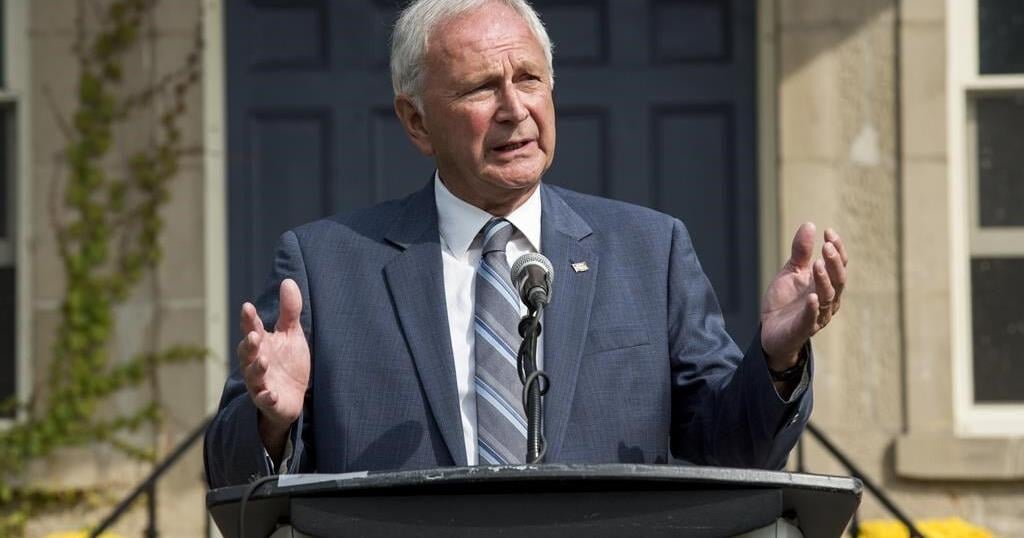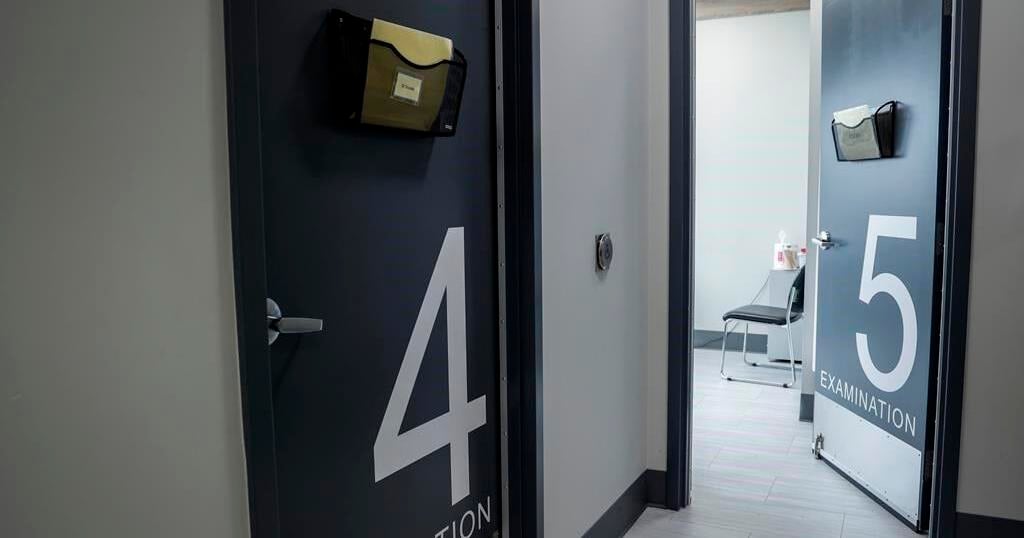Health
Bike Regina surveying commuters on cycling experiences

The local bike advocacy group is currently running an online public engagement survey, asking how people feel about riding a bike in Regina.
McLaughlin said the goal is to understand the travel habits of the average two-wheeled commuter: what streets they’re using, what streets they aren’t, and where they wish they could be to simplify their commute.
“Anyone can take it whether they’re a cyclist or not,” she said, adding that the group also wants to gauge why people aren’t choosing to cycle, and why.
All response data collected will be shared with city planners, said McLaughlin, as Bike Regina regularly meets with the city in consultation on the City of Regina’s evolving Transit Master Plan.
In addition to a questionnaire, Bike Regina is also hosting an interactive Google map, asking respondents to identify the red and green flags in their commutes for others to see.
“This is how we know what gaps to fill in our network,” said McLaughlin. “If there’s a safety issue, and that’s the reason you’re not cycling, that’s the easiest way to reverse it.”
As someone who commutes daily on two wheels herself, McLaughlin said there has been improvement in the past few years, but the city still lacks a comprehensive network of routes that would make commuting by bicycle easier.
“Regina is, depending on where you are, an unfriendly to medium-friendly city,” she said.
More people are interested in cycling as a transit option, but McLaughlin said there’s still plenty of barriers making it a more difficult way to travel.
While many use and appreciate the existing network of cycling-friendly routes criss-crossing the city — like the multi-use trails that span the city from northwest to southeast — McLaughlin said they are limited and indirect.
Depending on the destination, using strictly bike paths, trails or streets with designated bike lanes can as much as double a person’s commute time.
“The infrastructure isn’t often built for direct links between home and work, or home and errands, or school,” she said. “It just doesn’t cover a lot of the city.”
And, she added, openly sharing the road with motorists can be harrowing, even for the most avid cyclists. Safety is a common concern expressed, she said.
“Nearly getting buzzed on the way to work, cars passing you unsafely, getting sworn at regularly,” she listed, as being regular occurrences. “It has been zero days since a near miss.
The city has added some bike lanes, both protected and open, in the past few years but McLaughlin said there’s more to be done before Regina cyclists are as mobile as cars.
She described recent projects like the advisory bike lanes painted down 14th Avenue as “low-hanging fruit” projects that are a good first step to expanding the safety network for cyclists.
“It was easy and quick to implement, and began to grow that culture and acceptance of installing bike infrastructure,” McLaughlin said.
McLaughlin said that adding more protected bike lanes to busy roads, like the ones installed on Pasqua Street, is on the radar, but improving safety can be even simpler.
Painting bike lanes in slower traffic zones, making crosswalk buttons accessible from the street, or prioritizing road maintenance and snow clearing on popular cycle routes would all be improvements.
“There are (crosswalk) cyclist signals, detectors the same way there are detectors for cars, so investing in those might be an interim step to explore,” she said.
Bike Regina is looking to advocate for these types of infrastructure, but first wants to understand where such things would be most valuable.
“It’s how we can pinpoint where we’re observing issues.”
The advocacy group last did an informative survey in 2019, gathering responses from approximately 600 people. This year’s goal is to match that engagement, or exceed it, said McLaughlin.
The survey is available online until May 31.

Health
Health-care announcements expected with two weeks to go in N.B. election race

New Brunswick‘s Liberal and Green parties are set to make announcements about health care on the campaign trail today as the provincial election race enters its second half.
Liberal leader Susan Holt is scheduled to hold her announcement this morning in Saint John, N.B., followed by lunch at the city’s market.
A spokesperson with the Progressive Conservative party shared few details about the event scheduled for leader Blaine Higgs in Fredericton this morning.
Green Party Leader David Coon will hold a news conference this morning about “local health-care decision-making” alongside deputy leader Megan Mitton in her Sackville, N.B. riding.
On Saturday, Coon said he was proud to put forward a gender-balanced slate among the party’s 46 candidates.
While the Liberals and Progressive Conservatives are running with full slates, the Greens are three candidates short and will not have full representation when the province’s residents go to the polls on Oct. 21.
This report by The Canadian Press was first published Oct. 7, 2024.
The Canadian Press. All rights reserved.
Health
Alberta Health Services’ snag leads to potential delay of patient referrals

EDMONTON – The Health Quality Council of Alberta is investigating how some medical referrals weren’t properly processed, potentially affecting 14,000 patients over the last five years across the province.
The referrals were made to specialists outside of Alberta Health Services, such as physiotherapists and dietitians.
The health authority’s CEO, Athana Mentzelopoulos, says it does an average 100,000 referrals per year, but in some cases it can’t confirm if patients received referral services.
She says the problem was flagged in late September, and a preliminary estimate suggests 31 patients may have experienced a potential negative outcome due to the delays.
The provincial government requested the investigation, and the quality council is to find out how the snag occurred and how it can be prevented in the future.
The health authority says it has begun notifying patients who may have been affected by the disruption, and the cases could date back to 2019.
This report by The Canadian Press was first published Oct. 4, 2024.
The Canadian Press. All rights reserved.
Health
Don’t fall for fake dentists offering veneers and other dental work on social media

WASHINGTON (AP) — If you have stained or chipped teeth, you might be considering veneers, customized teeth coverings that can restore a photogenic smile without more extensive dental work.
But dentists warn that these pricey cosmetic enhancements are at the center of a worrisome online trend: unlicensed practitioners without proper training or supervision offering low-cost veneers.
These self-described “veneer techs” often promote themselves on Instagram and TikTok, promising a full set of veneers for less than half of what dentists typically charge. Some also market their own training courses and certifications for people looking to get into the business.
It’s misleading, health professionals warn — and illegal. All states require dental work, including veneers, to be performed under the supervision of a licensed dentist.
On Thursday, Georgia law enforcement officials arrested Brandon Diller, who promoted himself to 158,000 Instagram followers as “Atlanta’s top veneer specialist and trainer.” Diller practiced dentistry without a license and sold “training and certificates, which were worthless” and “provided no legitimate or legal credentials,” according to an arrest warrant from Fulton County’s District Attorney’s office.
Here’s what to know about veneers and how to avoid bogus providers and services:
What are dental veneers?
Veneers are thin, custom-made dental coverings used to hide minor imperfections or to fill in gaps between teeth. Unlike crowns or more invasive dental implants, veneers are almost always considered cosmetic dentistry and generally aren’t covered by insurance.
Dentists usually charge between $1,000 and $2,000 per tooth for veneers, with higher prices for those made from porcelain compared with lower-grade materials.
Placing veneers involves stripping some of the natural enamel from the tooth and bonding the new covering into place. Because of that process, getting veneers is considered an irreversible procedure, according to the American Dental Association. They are not permanent, and can be expected to last between 5 to 15 years before they degrade and need to be replaced.
In recent months the ADA has been stepping up warnings about the risks of veneer procedures done by unlicensed individuals.
“Quality control is lost without the involvement of a licensed dentist,” said Dr. Ada Cooper, a New York-based dentist and ADA spokesperson. “We undergo years of education and training and need to be licensed by various regulatory bodies before we can practice.”
What are the risks of getting veneers from someone who isn’t licensed?
Improper veneer procedures can cause a range of health problems, including severe pain, nerve damage and tooth loss.
Patients need to be anesthetized before the enamel is removed from their teeth.
“It could be incredibly painful if they’re not anesthetized correctly,” said Dr. Zach Truman, who runs an orthodontics practice in Las Vegas. “You can also go too deep into the tooth and penetrate what’s called the pulp chamber, which contains blood vessels and nerves.”
One of the biggest problems Truman sees with unregulated veneer work is that customers aren’t getting screened for existing dental problems, such as gum disease and cavities.
“If you put a veneer on a tooth that has an active cavity, you’re just going to seal it in there and eventually it’s going to progress to tooth loss,” Truman said.
Dental veneers aren’t the only option for improving the appearance of teeth. Over-the-counter whitening kits can help with minor stains and discoloration. And dentists can sometimes use composite materials to reshape chipped or uneven teeth. But Truman says those fillings are prone to crack and won’t last as long as veneers.
How can I spot bogus veneer providers online?
One clue: Many individuals performing unlicensed dental work promote themselves on social media as “veneer technicians.”
Instead of working out of a dental office they often perform treatments at beauty salons, hotel rooms or private homes. Some advertise multi-city tours and encourage clients to message them to book an appointment in advance.
Much of the appeal of the services is in their pricing, with some offering a full set of veneers for a flat fee of $4,000 or $5,000. That’s less than half of what patients can generally expect to pay at a dental office.
Performing dental work without an appropriate license is illegal, the ADA notes.
Dentists and hygienists are licensed by state governments, who also define the work dental assistants can perform. But in all cases, veneers and other dental procedures must be supervised by a licensed dentist.
Earlier this year, Illinois law enforcement officials arrested a woman running a business called the Veneer Experts after she posted videos of herself fitting braces, veneers and other dental products without a license. She was previously arrested in Nevada on similar allegations of practicing dentistry without a license.
What are the best ways to find legitimate dental providers?
The ADA maintains a website detailing the training and licensing requirements for dentists across the U.S. Most states also maintain websites where you can lookup and verify licensure information and find any past disciplinary actions for dentists and other health professionals.
“It’s really critical to understand that dentistry is a regulated health care profession that requires formal educations and licensure,” Cooper said.
___
The Associated Press Health and Science Department receives support from the Howard Hughes Medical Institute’s Science and Educational Media Group. The AP is solely responsible for all content.
-

 News9 hours ago
News9 hours agoLindor homers as Mets stop Dodgers’ scoreless streak in 7-3 win, tie NLCS 1-1
-

 News9 hours ago
News9 hours agoRicky Pearsall returns to the 49ers practice for the first time since shooting
-

 News9 hours ago
News9 hours agoCalgary libraries to reopen Wednesday following cybersecurity breach
-

 News9 hours ago
News9 hours agoSoccer legend Christine Sinclair set for final hometown game as Whitecaps host Thorns
-

 News11 hours ago
News11 hours agoCanada expels India’s top diplomat and alleges wider diplomatic involvement in crimes
-

 News12 hours ago
News12 hours agoAlberta government proposing additional restrictions on wind and solar energy
-

 News11 hours ago
News11 hours agoWeekend water main break not related to big one in June, Calgary official says
-

 News12 hours ago
News12 hours agoNova Scotia Power crew on the ground assisting with power restoration in Tampa




















